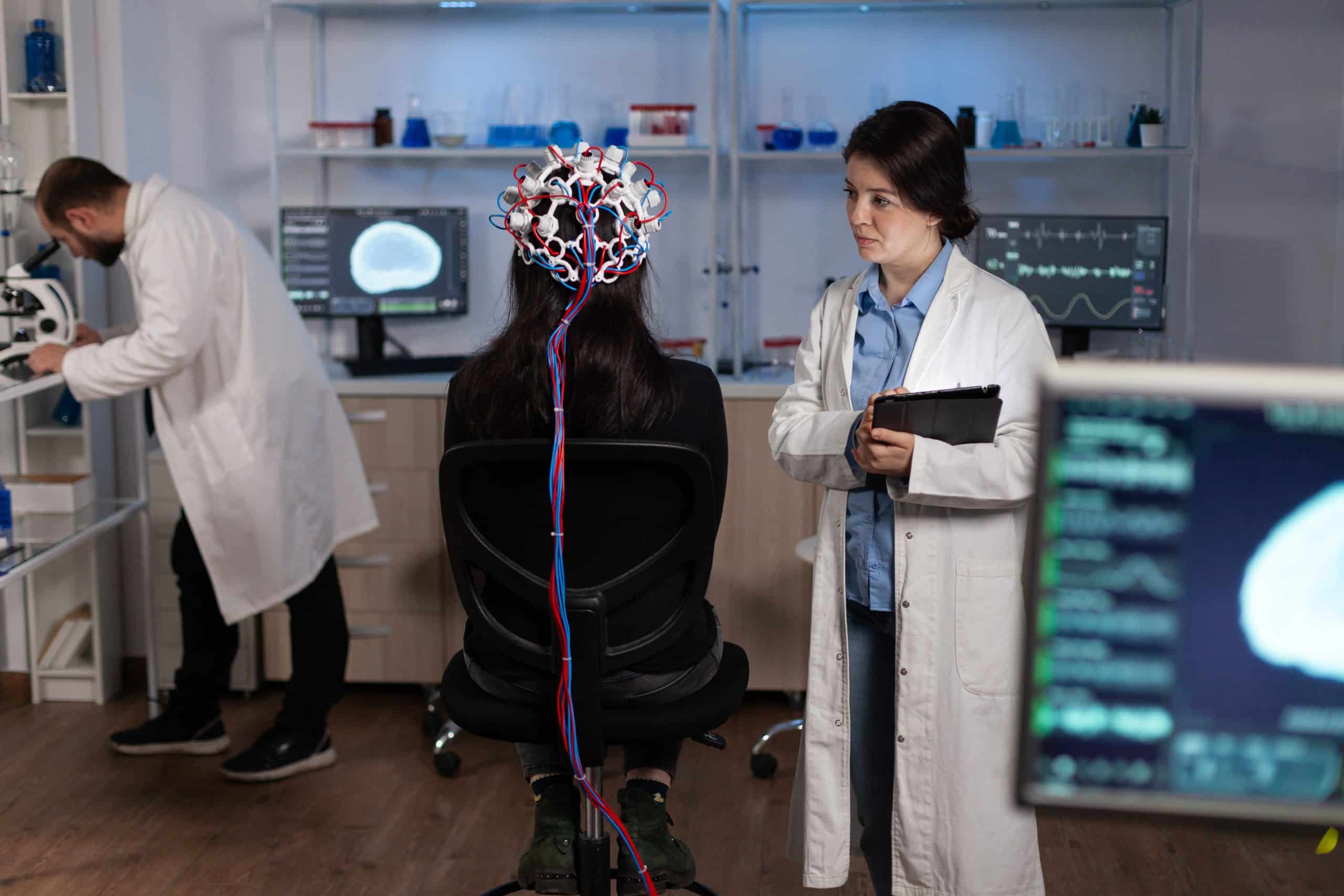How Are Smart Contact Lenses Evolving for Augmented Vision Applications?

In recent years, the marriage of technology and healthcare has birthed numerous innovations that are reshaping the modes in which we access, monitor, and maintain our health. The integration of technology into contact lenses is among the most exciting areas of development. These smart lenses represent a dramatic leap forward, harnessing cutting-edge augmented reality (AR) technology to enhance vision and provide health monitoring capabilities. This article will explore how smart contact lenses are evolving for augmented vision applications, with a focus on Mojo Vision’s smart lens, glucose monitoring, and the power of data.
The Magic of Mojo Vision’s Smart Lens
Imagine being able to view a wealth of information in the blink of an eye. The concept may sound like science fiction, but thanks to advances in technology, this vision is rapidly becoming a reality. Mojo Vision is a pioneering company in the realm of smart lenses. They have developed a contact lens that provides an augmented reality display to its users, enabling us to view and interact with digital information in real time.
Avez-vous vu cela : How Are Augmented Reality HUDs Transforming the Driving Experience in the UK?
The Mojo Lens uses cutting-edge technology to project images directly onto the retina, creating visuals that appear to float in front of the user’s eyes. This application of AR technology can enhance the user’s vision, allowing them to see clearer and further than ever before. The Mojo Lens is packed with sensors and processors that work seamlessly to provide the user with an interactive, digital overlay on their physical world.
The Mojo Lens also offers potential for assisting those with visual impairments. It can highlight objects and people in the user’s surroundings, providing enhanced visibility to those who may struggle with traditional vision aids. In essence, the Mojo Lens is paving the way for a new era of smart contact lenses that will augment our reality, expanding our vision capabilities and creating a more interconnected world.
Cela peut vous intéresser : Can AI-Enhanced Drones Aid in Precision Agriculture for Crop Disease Detection?
Glucose Monitoring Through Smart Lenses
Another remarkable development in smart contact lens technology is the ability to monitor health metrics, such as glucose levels. For people living with diabetes, this innovation could bring about a major shift in their healthcare management.
Continuous glucose monitoring (CGM) is crucial for managing diabetes, and typically requires regular finger pricks to draw blood. However, a smart contact lens that can monitor glucose levels through tears, eliminating the need for those painful and inconvenient pricks, is currently under development.
The lens works by incorporating a tiny glucose sensor and a wireless chip into the contact. These components can detect and relay glucose concentration data from the wearer’s tears. The data can be transmitted in real time to a connected device, providing a continuous record of glucose levels. This can help diabetic patients manage their condition more effectively by giving them immediate access to vital information.
The potential of smart lenses for glucose monitoring signals a significant advancement in health tech. By providing real-time, painless monitoring, smart lenses can dramatically improve the quality of life for people living with diabetes.
The Power of Data in Smart Contact Lenses
Amidst the rise of smart contact lenses, the value of the data they generate cannot be overstated. Smart lenses have the ability to collect and analyze a wealth of information about the user’s health and surroundings. This data can be harnessed to create personalized, dynamic experiences that adapt to the user’s needs over time.
For instance, Mojo Vision’s smart lens can collect data about the user’s visual habits and preferences, allowing the lens to adjust its display to suit the user’s needs. Similarly, the glucose monitoring lens can track patterns in the user’s glucose levels, providing insights that can inform treatment decisions.
In addition to health data, smart lenses can capture environmental data, such as light conditions, temperature, and movement. This data can be used to optimize the lens’ performance under different conditions, enhancing the user’s experience.
The capacity for data collection and analysis is one of the most compelling aspects of smart contact lenses. By generating a wealth of personalized data, smart lenses have the potential to become powerful tools for health management and augmented reality experiences.
The Future of Smart Contact Lens Technology
As smart contact lenses continue to evolve, they promise to transform our vision experience and health monitoring capabilities. The integration of augmented reality and health tech into contact lenses presents a future where we can interact with our surroundings in more meaningful ways.
Mojo Vision’s smart lens is a testament to the potential of this technology, offering users an enhanced vision experience that blurs the line between the digital and physical world. Similarly, the development of glucose monitoring lenses could revolutionize diabetes management, providing continuous, painless monitoring of glucose levels.
The power of data is another key driving force in the evolution of smart contact lenses, providing the potential for personalized, adaptive experiences. As we look to the future, it’s clear that smart lenses will play a crucial role in shaping our visual and health tech landscapes.
Next-Generation Drug Delivery Via Smart Contact Lenses
Greater control and precision in drug delivery are essential for effective treatment and management of many health conditions. Interestingly, smart contact lenses offer an innovative solution for targeted and controlled drug delivery directly to the eye. These are especially beneficial for treating eye diseases, including glaucoma, dry eye, and macular degeneration.
Innovative contact lenses incorporate a drug-loaded polymer film. This film gradually releases the drug into the tear fluid on the eye’s surface, ensuring a steady delivery over an extended period. This type of delivery method allows for more effective treatment as the medicine remains in the eye, precisely where it’s needed.
Compared to traditional eye drops, this method significantly enhances patient compliance and reduces potential side effects. It is particularly useful in treating chronic eye diseases that require regular medication, like glaucoma, where the primary challenge is the consistent lowering of intraocular pressure.
Moreover, these lenses can be integrated with sensors to track the drug delivery data in real time. This data can help clinicians monitor the effectiveness of the treatment and adjust dosages if necessary. Therefore, combining drug delivery and real-time monitoring capabilities in a single device could lead to better, personalized eye care solutions in the future.
Blue Light Protection and Eye Tracking
In the digital age where screens are an integral part of our lives, the protection from harmful blue light has become a significant concern for eye health. Smart lenses are being developed to tackle this problem head-on. These lenses can adjust their filtering capabilities based on the amount of blue light in the environment, providing optimal protection in real time.
Additionally, eye tracking has become a frontrunner in the realm of smart lenses. These lenses can monitor eye movements and provide valuable data about how a person interacts with their environment. This technology opens a myriad of possibilities, from diagnosing neurological disorders to enhancing virtual reality experiences.
For instance, eye tracking in smart lenses can offer a hands-free way to navigate augmented reality or virtual reality environments. They can also be used in the field of psychology to understand human behavior better. Furthermore, eye tracking combined with machine learning algorithms can potentially detect early signs of conditions like Parkinson’s disease or autism.
Conclusion: A Promising Horizon for Smart Contact Lens Technology
From enhancing our vision with augmented reality to monitoring health metrics and offering new methods for drug delivery, smart contact lenses are ushering in a new era of wearable technology. Companies like Mojo Vision are leading the way, showing us a glimpse of what’s possible when innovative technology meets healthcare.
The ability of smart lenses to collect and analyze a plethora of personalized data will prove invaluable in the times to come. These lenses will become powerful tools for health management, offering tailored experiences based on an individual’s needs.
As we move forward, we can anticipate more advances in this field, such as contact lenses that can adapt to different light conditions or even lenses that can track our eye movements to control devices. The potential for smart contact lenses is truly vast, and their evolution will undoubtedly shape our future in profound ways. The fusion of technology, data, and eye health is just the beginning, and we can’t wait to see what the future holds.
